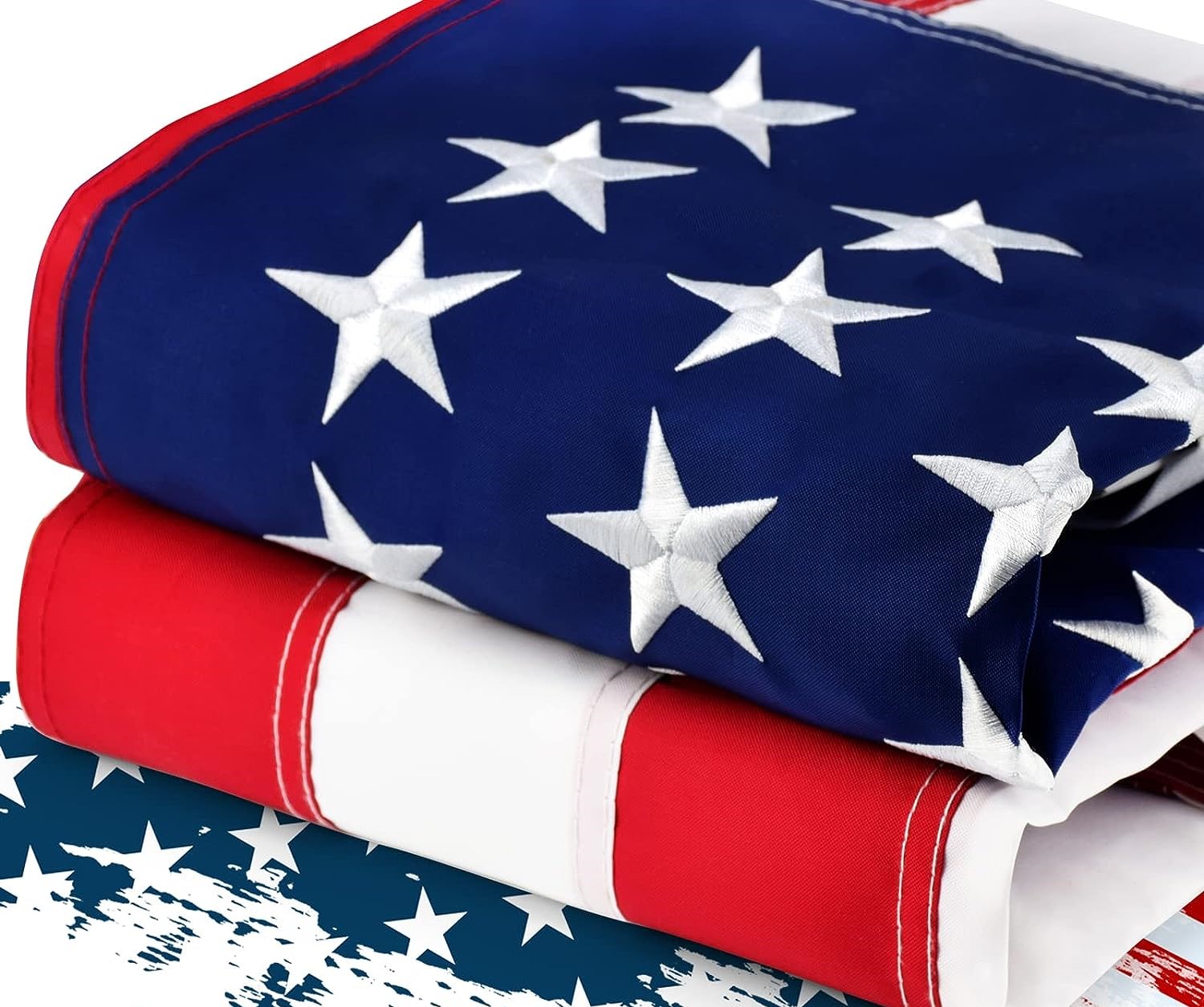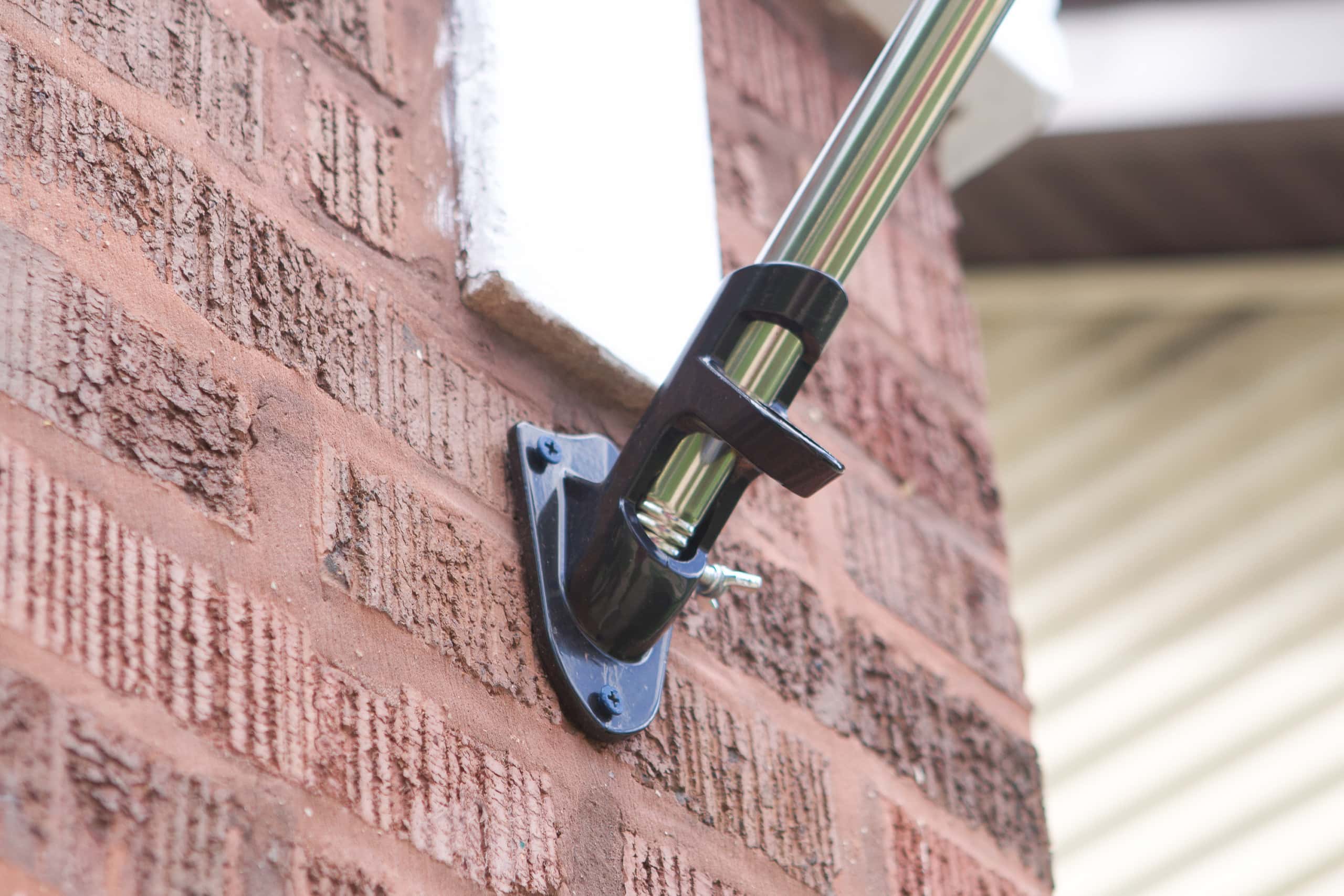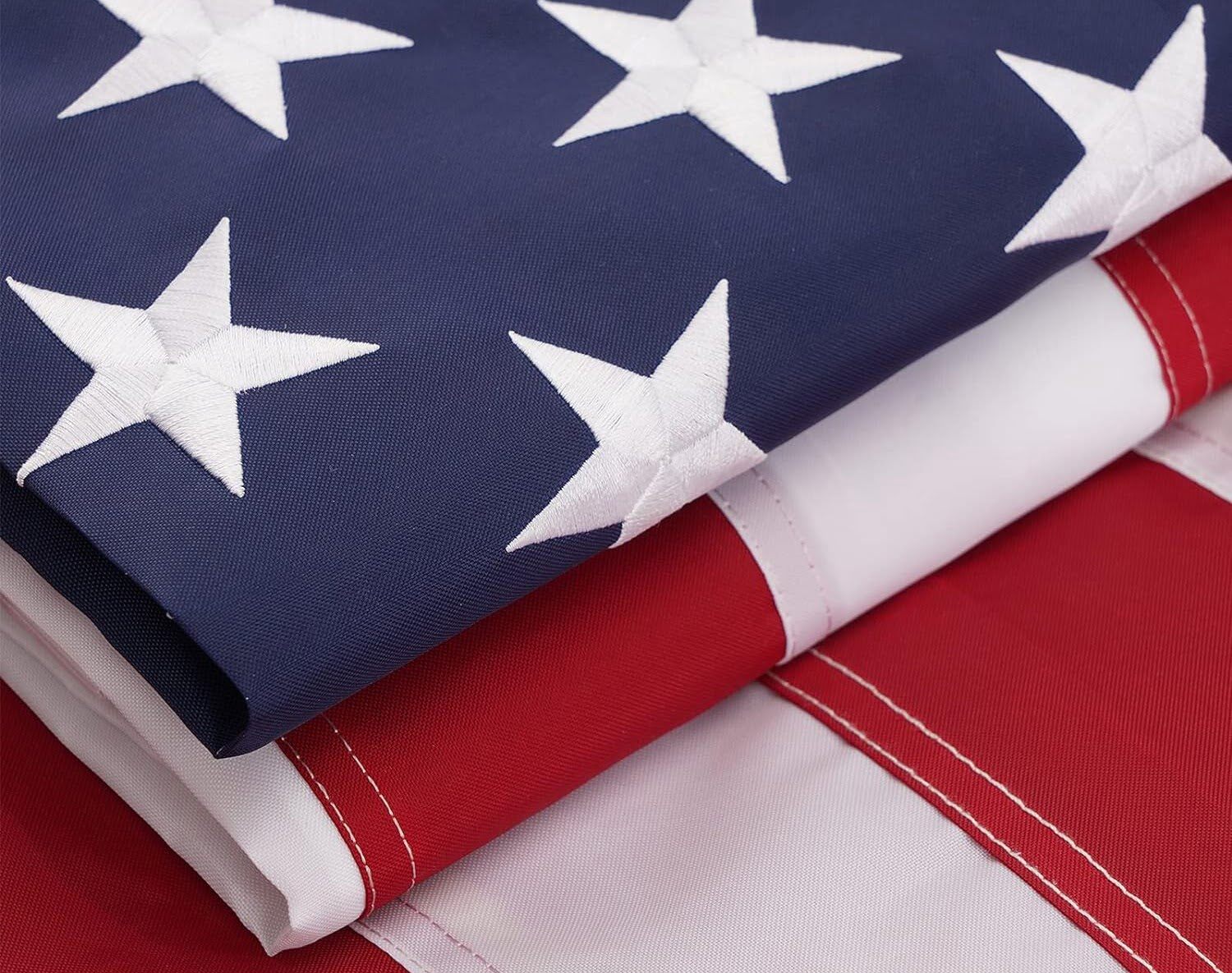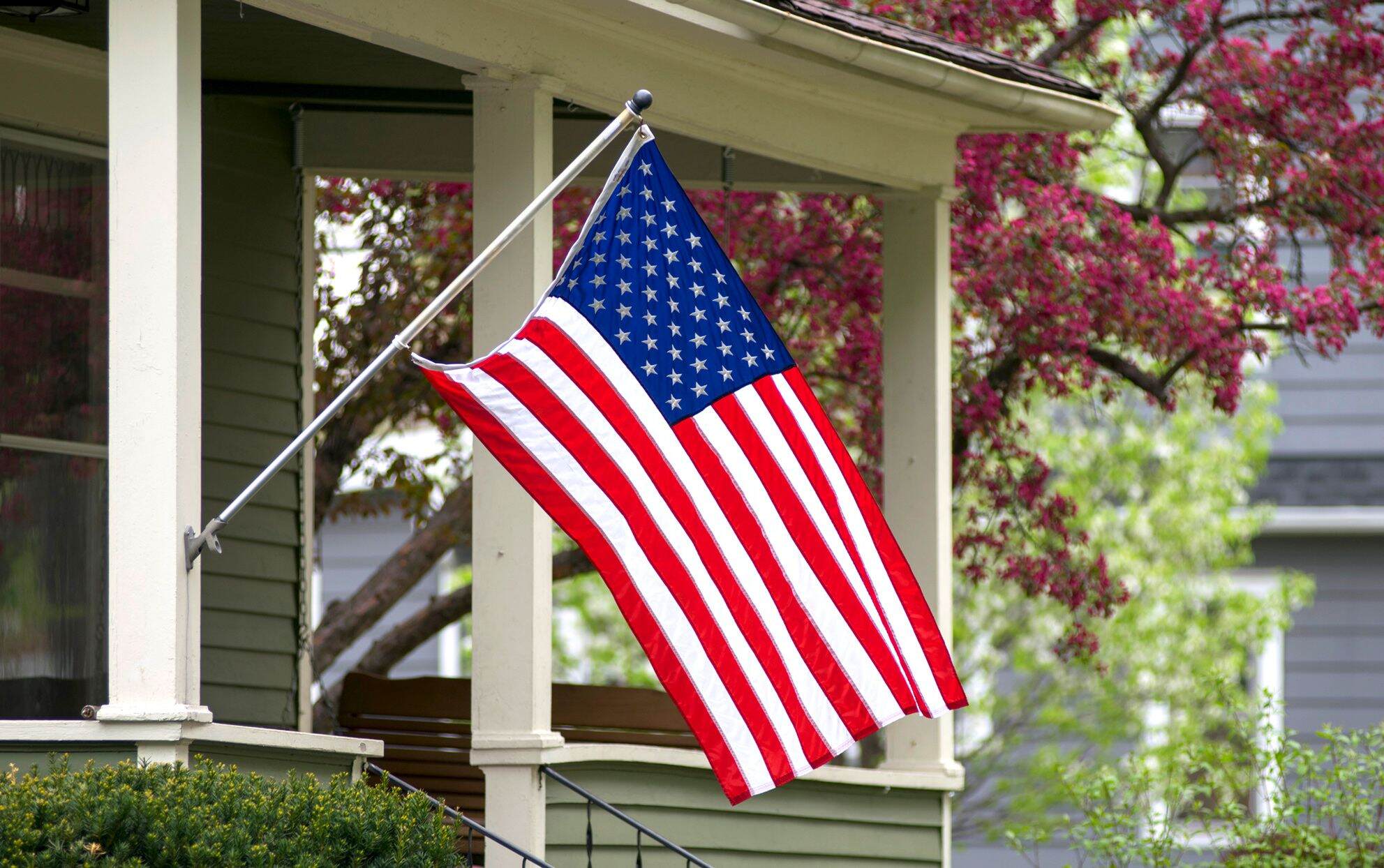

Articles
How To Store Flags
Modified: January 14, 2024
Learn the best practices for storing articles in this comprehensive guide. Discover effective techniques to preserve flags and keep them in pristine condition.
(Many of the links in this article redirect to a specific reviewed product. Your purchase of these products through affiliate links helps to generate commission for Storables.com, at no extra cost. Learn more)
Introduction
Flags hold great significance and symbolism for various countries, organizations, and causes. Whether you have a cherished flag that holds sentimental value or you want to store flags for long-term preservation, it’s important to have a proper storage system in place. This article will guide you through the process of storing flags to ensure they remain in pristine condition for years to come.
Before diving into the details of flag storage, it’s essential to understand that different materials, such as polyester, cotton, or nylon, require specific care. Assessing the flag material will guide you in choosing the appropriate methods and products for cleaning and storage.
Caring for flags goes beyond storing them properly; it includes cleaning, folding, and handling them with care. By following the tips and techniques outlined in this article, you can ensure that your flags retain their beauty and integrity while being safely stored.
It’s important to note that the guidelines provided here are general recommendations; always refer to any specific care instructions provided by the manufacturer or consult with a professional if you have any doubts about handling or storing a particular flag.
Now, let’s dive into the details of assessing the flag material to determine the best storage methods.
Key Takeaways:
- Preserve the Pride: Assess flag material, clean, fold, and store with care to maintain their beauty and significance. Follow proper handling and display etiquette to honor their symbolism.
- Longevity and Respect: Choose suitable storage containers, prepare flags for storage, and select appropriate indoor or outdoor locations. Handle with care, inspect regularly, and follow flag etiquette for lasting preservation.
Read more: How To Store A Flag
Assessing Flag Material
Before you start storing your flags, it’s crucial to assess the material they are made of. Different flag materials require different care and storage methods to ensure their longevity.
Most flags are made from polyester, nylon, or cotton. Polyester flags are durable, fade-resistant, and can withstand outdoor conditions. Nylon flags are lightweight, quick-drying, and also suitable for outdoor use. Cotton flags have a traditional look and feel but are more susceptible to fading and damage from outdoor elements.
Examine the label or check the manufacturer’s specifications to determine the material of your flag. If the flag is made from a blend of materials, take note of the primary fabric to guide your storage decisions.
Once you identify the material, you can proceed with cleaning and storing the flag accordingly. Polyester and nylon flags can typically be stored both indoors and outdoors, while cotton flags are more suitable for indoor display and storage.
Now that you’ve assessed the flag material, let’s move on to the next step: cleaning the flags to prepare them for storage.
Cleaning Flags
Before storing your flags, it’s important to clean them to remove any dirt, debris, or stains that may have accumulated over time. Proper cleaning not only improves their appearance but also helps to prevent any damage or discoloration during storage.
The cleaning method you choose will depend on the material of the flag. Here are some general guidelines:
- Polyester and Nylon Flags: Machine wash these flags using a gentle cycle with cold water. Use a mild detergent and avoid bleach or harsh chemicals as they can damage the fabric. To prevent tangling or tearing, place the flag in a laundry bag or pillowcase before washing. After washing, air dry the flag by hanging it or laying it flat on a clean surface away from direct sunlight.
- Cotton Flags: Hand wash cotton flags using a mild detergent and cold water. Gently agitate the flag in the soapy water, paying extra attention to any stains. Rinse thoroughly to remove all the soap. Avoid wringing or twisting the flag, as this can cause damage. Instead, gently press out excess water and air dry the flag by hanging or laying it flat in a well-ventilated area.
If your flag has intricate embroidery or appliques, consider spot cleaning those areas with a clean, damp cloth using a gentle dabbing motion.
It’s worth mentioning that if your flag is excessively dirty or has stubborn stains, it may be best to consult with a professional flag cleaner to avoid any damage during the cleaning process.
Now that your flag is clean and dry, it’s time to move on to the next step: folding the flag properly for storage.
Folding Flags
Properly folding a flag is essential for maintaining its integrity and preventing wrinkles or creases during storage. The folding method may vary slightly depending on the size and shape of the flag, but the overall goal is to create a compact and uniform fold.
Here is a general step-by-step guide on how to fold a flag:
- Spread the flag out on a clean, flat surface, ensuring there are no wrinkles or folds.
- Starting at one corner, fold the flag in half lengthwise, aligning the edges carefully. This should create a long, narrow strip.
- Take the striped end of the flag and fold it diagonally towards the canton (the section with stars or the emblem), creating a triangular shape. Make sure the edges are neatly aligned.
- Continue folding along the length of the flag in a triangular pattern, keeping the edges straight and creating a compact, folded triangle.
- Once you reach the end of the flag, tuck any excess fabric neatly behind the folded triangle.
Remember to handle the flag with care during the folding process, avoiding any unnecessary tugging or pulling.
If you’re unsure about the proper folding technique for a specific flag, refer to any flag-specific instructions or consult resources such as flag etiquette guides.
Now that your flag is neatly folded, it’s time to move on to the next step: choosing the appropriate storage containers.
Choosing Storage Containers
When it comes to storing flags, choosing the right containers is crucial for protecting them from dust, sunlight, moisture, and other potential sources of damage. The ideal storage containers should be sturdy, spacious enough to accommodate the folded flags without excessive compression, and provide a level of protection.
Here are some options to consider for storing your flags:
- Flag Cases: Flag cases are specifically designed to hold and display flags. They are usually made of wood or metal and feature a glass or acrylic front for visibility. Flag cases provide excellent protection against dust and moisture, and they also add a touch of elegance if you plan to display your flags.
- Storage Boxes: If you prefer a more compact storage option, consider using acid-free archival storage boxes. These boxes are available in various sizes and are made from materials that are safe for long-term flag storage. Look for boxes with a tight-fitting lid to prevent dust and moisture from entering.
- Polyethylene Bags: For temporary or short-term storage, you can use large polyethylene bags to protect your folded flags. Make sure the bags are clean and free of any chemicals that may cause damage to the fabric.
Before placing your flags in the chosen storage container, make sure they are completely dry to prevent mold or mildew growth.
Additionally, consider labeling your storage containers to easily identify the contents. You can use adhesive labels or attach a small tag with relevant information such as the flag’s origin or significance.
Now that you have selected the appropriate storage containers, let’s move on to the next step: preparing the flags for storage.
Read more: How To Store Garden Flags
Preparing Flags for Storage
Before storing your flags, it’s important to take a few preparatory steps to ensure they remain in optimal condition. By following these guidelines, you can minimize the risk of damage and help preserve the flags for future use or display.
Here are some steps to consider when preparing your flags for storage:
- Inspect for Damages: Before storing your flags, carefully examine them for any signs of damage, such as tears, loose threads, or fading. Address any repairs needed before storing the flags to prevent the damage from worsening over time.
- Remove Accessories: If your flag has any accessories attached, such as decorative tassels or cords, gently remove them before storing. These accessories can become tangled or damaged during storage and may also create unnecessary pressure on the flag fabric.
- Consider Acid-Free Tissue Paper: To provide an extra layer of protection, you can wrap the folded flags in acid-free tissue paper before placing them in the storage containers. The tissue paper helps to prevent direct contact between the flag fabric and the container, reducing the risk of moisture or color transfer.
- Avoid Contact with Plastic: While using plastic storage containers is common, it’s essential to avoid direct contact between the flag and the plastic surface. Plastic can trap moisture and cause the flags to deteriorate. Instead, opt for acid-free archival boxes or line the storage container with acid-free tissue or clean cotton fabric.
By following these preparatory steps, you can ensure that your flags are in the best possible condition for storage. Now, let’s move on to the next section: storing flags indoors.
Store flags in a cool, dry place to prevent fading and damage. Avoid folding them tightly to prevent creases, and consider hanging them or rolling them loosely for storage.
Storing Flags Indoors
Storing flags indoors provides additional protection from outdoor elements such as sunlight, rain, and fluctuations in temperature and humidity. Here are some tips for storing flags indoors:
- Select a Cool, Dry Location: Choose a storage area that is well-ventilated, cool, and dry. Avoid areas prone to moisture, such as basements or attics, as excessive humidity can lead to mold or mildew growth.
- Keep Flags Elevated: Place the storage containers or flag cases on shelves or racks to keep them off the floor. This helps to prevent any potential damage from flooding, pests, or accidental spills.
- Avoid Direct Sunlight: Sunlight can cause fading and deterioration of the flag fabric over time. Store the flags in a location where they are shielded from direct sunlight, such as a closet or a dark corner of a room.
- Monitor the Environment: Periodically check the storage area for any signs of moisture buildup or temperature fluctuations. Maintain a stable environment to prevent any damage to the flags.
- Rotate Displayed Flags: If you have a collection of flags and only a limited display space, consider rotating the flags periodically to ensure equal exposure and prevent excessive wear on a single flag.
By following these guidelines for storing flags indoors, you can help maintain their condition and extend their lifespan.
Now, let’s move on to the next section: storing flags outdoors.
Storing Flags Outdoors
Storing flags outdoors requires extra precautions to protect them from the elements and prevent damage. If you live in an area where outdoor storage is necessary, here are some tips to follow:
- Choose Weather-Resistant Storage: Look for outdoor flag storage options that are specifically designed to withstand the elements. Weather-resistant flag cases or boxes made of durable materials like UV-resistant plastic or metal can help protect the flags from rain, wind, and sunlight.
- Secure the Storage Container: Ensure that the outdoor storage container is securely closed or locked to prevent unauthorized access, tampering, or potential damage from animals or pests.
- Elevate the Container: Place the storage container on an elevated surface to avoid direct contact with the ground. This helps prevent moisture from seeping into the container and causing damage to the flags.
- Shield from Direct Sunlight: If the storage container does not provide UV protection, consider placing it in a shaded area or use a cover to shield the flags from direct sunlight. Exposure to prolonged sunlight can cause fading and deterioration of the flag fabric.
- Monitor and Maintain: Regularly check the storage container for any signs of wear, tear, or water damage. If you notice any issues with the storage container or flags, take prompt action to address them and make necessary repairs or replacements.
Remember that storing flags outdoors should be done as a temporary solution, perhaps when flagpoles are being repaired, or during inclement weather situations. If possible, it’s recommended to bring the flags indoors or store them in a more controlled environment for long-term storage.
Now that you know the essential guidelines for storing flags outdoors, it’s time to focus on displaying the flags properly.
Displaying Flags Properly
When it comes to displaying flags, it’s important to show respect and adhere to proper flag etiquette. Here are some guidelines for displaying flags properly:
- Positioning: When displaying a flag indoors, it should be positioned to the right of any other flags or decorations. If multiple flags are being displayed, the national flag should be placed in a position of prominence, usually in the center.
- Flagpoles: If you are using a flagpole to display your flag, make sure it is sturdy and secure. The flag should be hoisted all the way to the top of the pole and properly secured to prevent it from tangling or falling.
- Flag Orientation: The union (the blue field with stars) should always be positioned at the peak or top-left corner of the flag, whether it’s being displayed vertically or horizontally.
- Lighting: If the flag is displayed at night, it should be properly illuminated. This can be achieved through outdoor spotlights or other suitable lighting fixtures.
- Respect and Care: Treat the flag with care and respect at all times. Do not use the flag for any form of advertising or as a temporary covering. Only display clean and undamaged flags.
It is important to research and follow specific flag display guidelines based on your country’s flag code or any applicable regulations for special occasions or events.
Remember that while displaying the flag is a patriotic gesture, proper handling and respect for the flag are equally important. By adhering to flag etiquette, you can demonstrate your reverence for the flag’s symbolism.
Now that you know how to properly display flags, let’s move on to the next section: handling and care tips.
Read more: How To Store Decorative Flags
Handling and Care Tips
Proper handling and care are essential for preserving the condition and longevity of your flags. Here are some tips to keep in mind:
- Handle with Clean Hands: Always ensure that your hands are clean and dry before handling the flag. This helps prevent any transfer of dirt, oils, or moisture onto the fabric.
- Avoid Dragging or Pulling: When moving or adjusting the flag, avoid dragging it on the ground or pulling it forcefully. This can cause fraying or damage to the fabric.
- Inspect Regularly: Regularly inspect your flags for any signs of wear, tear, or damage. Address any repairs or replacement needs promptly to prevent further deterioration.
- Keep Away from Flames: Flags are made of flammable materials, so it’s vital to keep them away from open flames or any sources of fire.
- Periodic Airings: If possible, give your flags a brief airing outdoors on a dry and calm day. This can help remove any trapped odors and freshen the fabric.
- Avoid Folding the Same Way: To prevent permanent creases, alternate the folding pattern of your flags during storage. This distributes the stress of the fold evenly across the fabric.
- Be Mindful of Storage Conditions: Monitor the storage conditions regularly to ensure they remain suitable for preserving the flags. Check for any signs of moisture, pests, or temperature fluctuations.
By following these handling and care tips, you can prolong the life and beauty of your flags while respecting their significance and symbolism.
Now that you have a comprehensive understanding of how to handle and care for flags, it’s time to wrap up this article.
Conclusion
Properly storing flags is crucial for preserving their beauty and significance. Whether you have a flag with sentimental value or you want to ensure long-term preservation, following the right storage methods and flag care techniques is essential.
Assessing the flag material, cleaning them properly, and folding them with care are the initial steps in the flag storage process. Choosing the right storage containers, preparing the flags for storage, and selecting suitable storage locations (indoors or outdoors) are important considerations to ensure their protection.
Displaying flags with respect and following proper flag etiquette adds to the significance of their symbolism. Handling the flags gently and regularly inspecting them for any damage ensures their longevity. Always remember to handle flags with clean hands, avoid dragging or pulling, and keep them away from potential fire hazards.
By carefully following the guidelines outlined in this article, you can effectively store flags, maintain their condition, and enjoy their beauty for years to come.
Remember that each flag may have specific care instructions based on its material and origin, so it’s important to refer to manufacturer recommendations or consult with professionals if needed.
Now it’s time to take the knowledge you’ve gained and apply it to properly store and care for your flags. By doing so, you will preserve their integrity and ensure that they continue to hold the pride and significance they represent.
Frequently Asked Questions about How To Store Flags
Was this page helpful?
At Storables.com, we guarantee accurate and reliable information. Our content, validated by Expert Board Contributors, is crafted following stringent Editorial Policies. We're committed to providing you with well-researched, expert-backed insights for all your informational needs.














0 thoughts on “How To Store Flags”